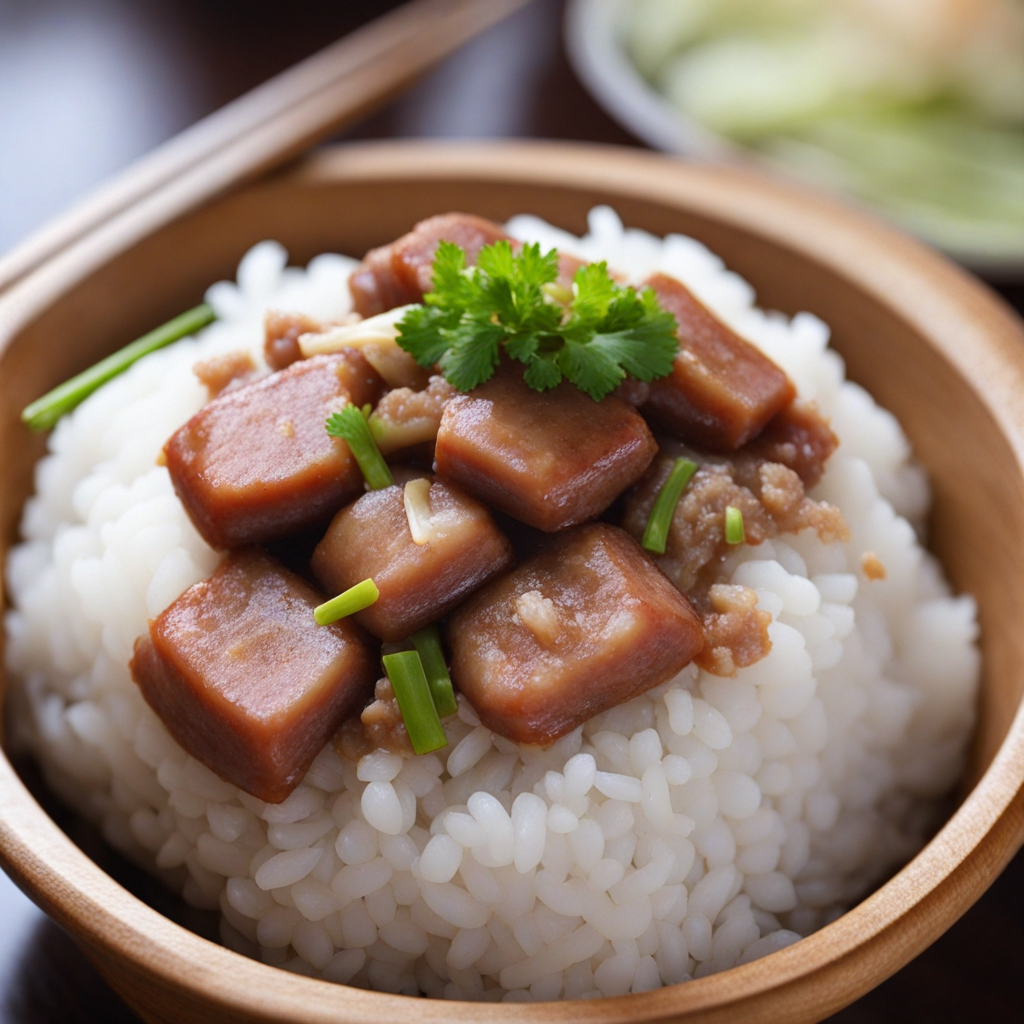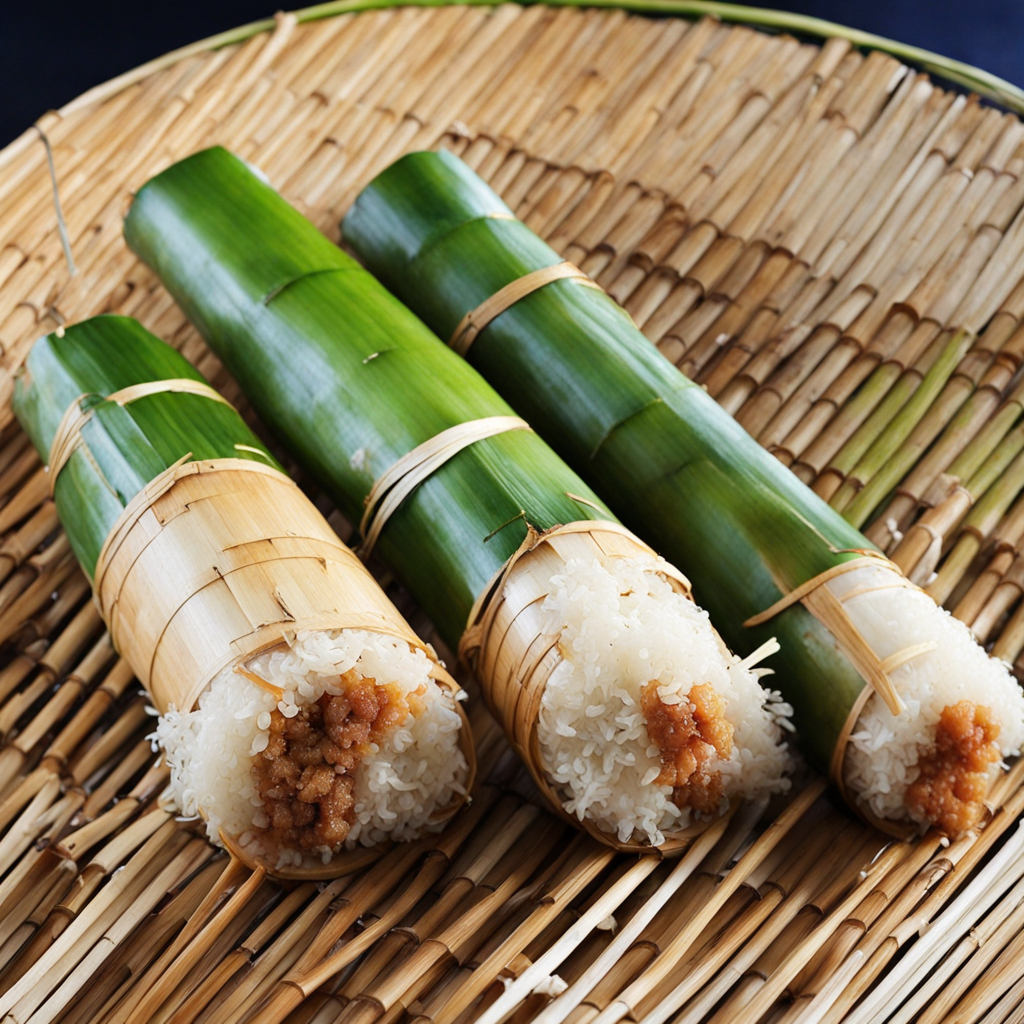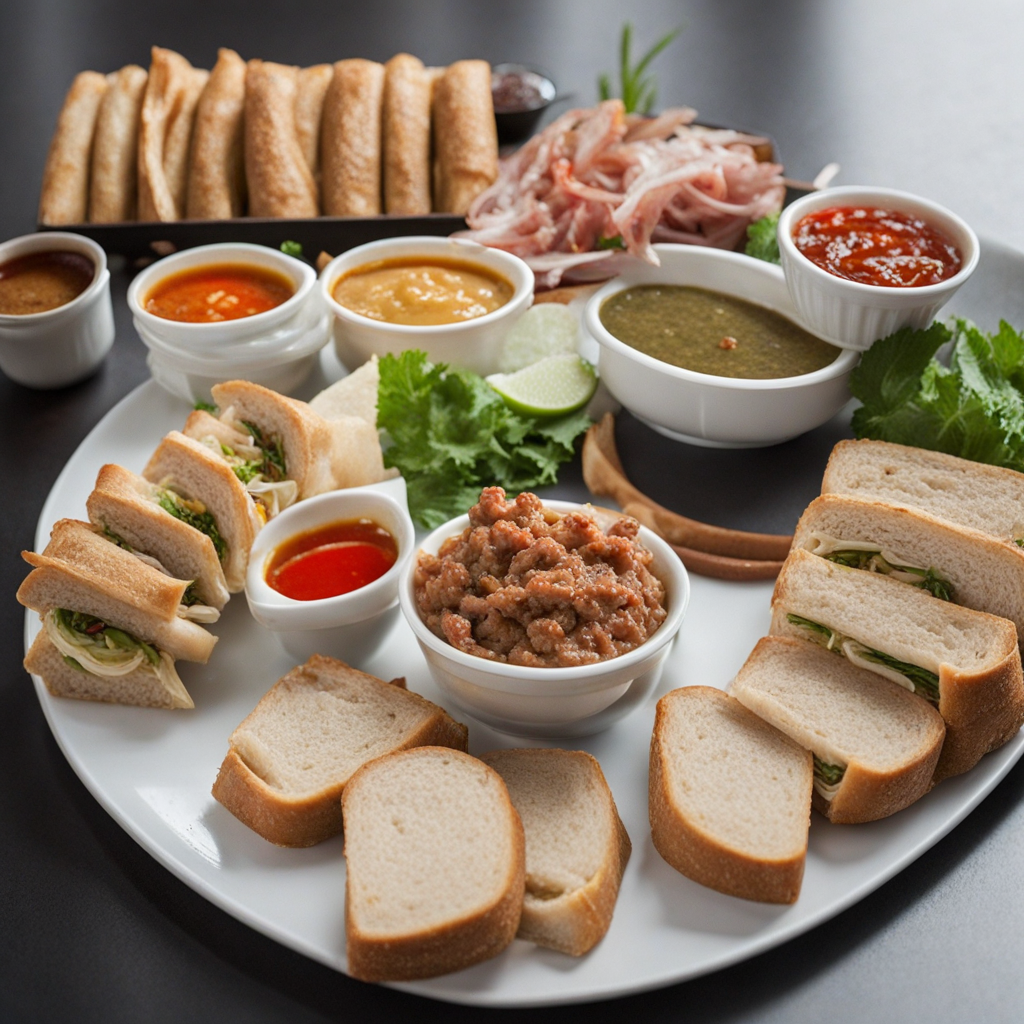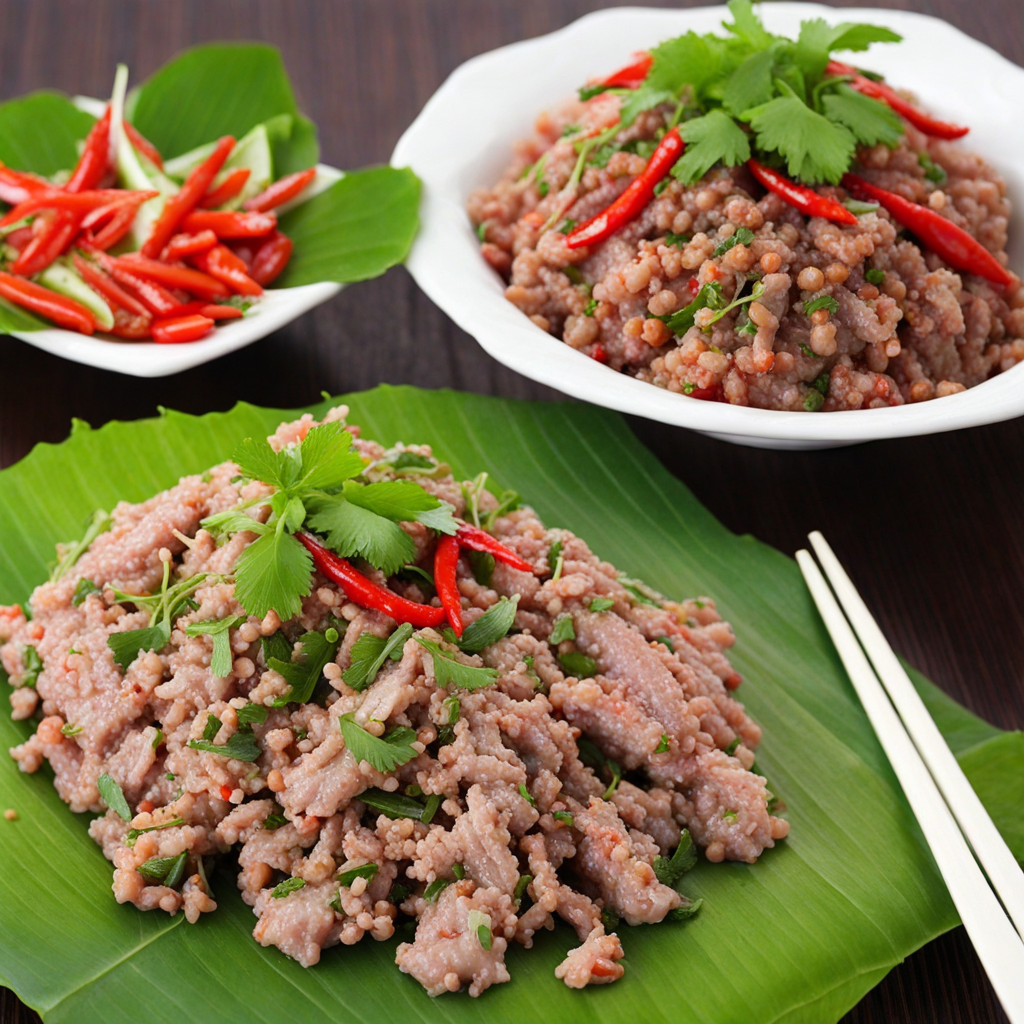Som Moo
Som Moo is a delightful dish from Laos that showcases the country's rich culinary heritage. This vibrant salad features shredded green papaya as its star ingredient, which provides a wonderfully crunchy texture and a subtly sweet flavor. The dish is typically enhanced with minced pork that is marinated and mixed in, adding a savory depth that perfectly complements the freshness of the papaya. The use of fresh herbs, such as mint and cilantro, adds an aromatic touch that elevates the overall experience, making every bite a burst of flavor. What sets Som Moo apart is its unique blend of flavors, which is quintessential to Laotian cuisine. The dish is dressed with a tangy mixture of lime juice, fish sauce, and chili, creating a harmonious balance of sour, salty, and spicy notes. This dressing not only enhances the ingredients but also brings a refreshing brightness to the dish. Often served with a sprinkle of crushed peanuts on top, Som Moo provides a delightful crunch that complements the tender meat and crisp vegetables. Som Moo is typically enjoyed as a side dish or a light meal, making it a versatile addition to any dining experience. It is often paired with sticky rice, which serves to absorb the vibrant flavors of the salad. With its combination of textures and flavors, Som Moo is an exciting option for anyone looking to explore the unique tastes of Laos. Each mouthful is a celebration of freshness, making it a must-try for adventurous eaters seeking new culinary experiences.
How It Became This Dish
Origin of ສົ້ມໝູ ສົ້ມໝູ, pronounced "som moo," is a traditional Lao dish that highlights the country’s rich culinary heritage. The name translates to "fermented pork salad," which reflects its main ingredient, fermented ground pork. The origins of this dish can be traced back centuries, rooted deeply in the agricultural practices and preservation methods of the Lao people. In a land where refrigeration was not always available, fermentation became an essential preservation technique, allowing families to store and enjoy their food for longer periods. In Laos, fermentation is more than just a method of preservation; it is an art form that showcases the balance of flavors that define Lao cuisine. The fermentation process infuses the pork with a tangy flavor, which is complemented by the addition of fresh herbs, spices, and vegetables. This transformation of simple ingredients into something flavorful and complex speaks to the ingenuity of Lao culinary traditions. \n Cultural Significance The preparation and consumption of ສົ້ມໝູ hold significant cultural value in Laos. It is often served during communal gatherings, celebrations, and festivals, embodying the spirit of sharing and hospitality that is so integral to Lao culture. The dish is not only a source of nourishment but also a way to bring people together, reflecting the importance of community in Lao society. In rural areas, making ສົ້ມໝູ is often a family affair, where the process of fermentation becomes a shared practice among generations. Elders pass down their knowledge and techniques to younger family members, fostering a deep connection to cultural heritage. The experience of crafting this dish reinforces familial bonds and reinforces the significance of traditional culinary practices in Lao life. \n Ingredients and Preparation The preparation of ສົ້ມໝູ involves a few key ingredients that reflect the flavors of the Lao palate. The primary ingredient is ground pork, which is mixed with a blend of garlic, rice powder, and salt. The mixture is then left to ferment for a few days, allowing the flavors to develop. This fermentation process not only enhances the taste but also adds a unique texture to the dish. After fermentation, additional ingredients such as fresh herbs—such as mint, cilantro, and green onions—are incorporated into the salad. Chili peppers are often added for a spicy kick, while lime juice provides a refreshing acidity that balances the richness of the pork. The dish is typically served with vegetables like cabbage, cucumber, and carrots, which not only add crunch but also contribute to the overall flavor profile. \n Regional Variations While ສົ້ມໝູ is widely recognized across Laos, regional variations exist that reflect local ingredients and culinary preferences. In some areas, for example, the dish might incorporate fish sauce or other fermented ingredients, showcasing the flexibility of the recipe. In northern Laos, where herbs are more abundant, the use of wild greens and flowers in the salad adds a unique twist to the traditional preparation. In urban areas, the popularity of ສົ້ມໝູ has led to its integration into modern dining experiences, with chefs experimenting with presentation and flavor combinations. This evolution of the dish demonstrates the adaptability of Lao cuisine, as it continues to appeal to both traditionalists and contemporary food enthusiasts alike. \n Modern Recognition In recent years, there has been a growing interest in Lao cuisine on the global stage, with dishes like ສົ້ມໝູ gaining recognition in international food circles. As travelers explore Southeast Asia, they increasingly seek out authentic culinary experiences, leading to a resurgence of interest in traditional Lao dishes. Food festivals, cooking classes, and pop-up restaurants have contributed to the growing appreciation for this unique cuisine. Chefs both in Laos and abroad are now highlighting the distinct flavors of ສົ້ມໝູ in their menus, often pairing it with local ingredients from their respective regions. This fusion of cultures not only enhances the dish but also fosters a greater understanding of Laos's culinary identity. As more people discover the rich flavors and cultural significance of ສົ້ມໝູ, it stands to become a staple on the global culinary map. \n Health Aspects In addition to its cultural and culinary significance, ສົ້ມໝູ also offers various health benefits due to its fermented nature. Fermented foods are known to be rich in probiotics, which can aid digestion and promote gut health. The use of fresh herbs and vegetables not only enhances flavor but also provides essential vitamins and minerals. Moreover, the balance of flavors in ສົ້ມໝູ—spicy, sour, and savory—aligns with the principles of a balanced diet. The dish can be enjoyed as a light meal or appetizer, making it a versatile option for those seeking healthier alternatives to heavier, more processed foods. \n Conclusion As ສົ້ມໝູ continues to evolve, it remains a steadfast representation of the Lao way of life—a harmonious blend of tradition and innovation. Its journey from humble beginnings as a method of preservation to a beloved dish cherished in both local and international cuisines exemplifies the resilience and adaptability of Lao culinary culture. Through the practice of making and sharing ສົ້ມໝູ, the people of Laos celebrate their rich heritage while inviting others to experience the flavors and stories that shape their identity.
You may like
Discover local flavors from Laos







